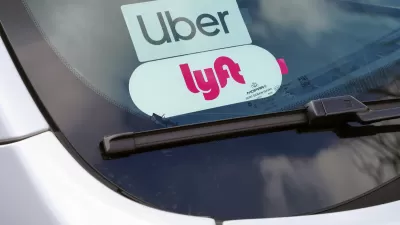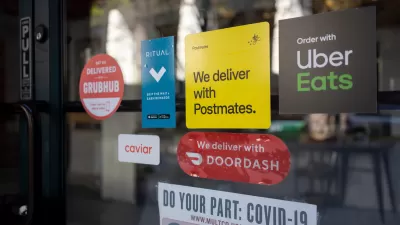Uber users are getting massive amounts of value from the service, according to a new analysis only possible in the post-transportation network company era.

"Uber has created more than a booming ride-sharing market," according to an article by Adam Creighton. "It’s given economists a treasure trove of data to understand one of the fundamental concepts of economics: the demand curve."
Steven Levitt, author of the best-selling Freakonomics, along with other researchers at the University of Chicago and Oxford worked together with Uber to map out the Uber demand curve, "showing U.S. consumers alone are reaping billions of dollars a year in benefits, far greater than the losses borne by taxi owners."
Such a demand curve was considered "nearly impossible," writes Creighton, until Uber came along. Uber's platform allows the collection of data on a number of the variables that make demand so volatile (i.e., price changes alone don't account for why people buy goods or services):
Uber’s data is unique in two crucial ways. It records not only the time, place, price, and demand-and-supply conditions of every paid ride (encapsulated in a surge factor), but also of every occasion where a customer declines the offered price.
Click through to the article to find out exactly how the new research quantifies Uber's demand curve, along with the implications of the new research on another tricky economic concept: consumer surplus.
[The Wall Street Journal could be blocked by a paywall.]
FULL STORY: Uber’s Pricing Formula Has Allowed Economists to Map Out a Real Demand Curve

Planetizen Federal Action Tracker
A weekly monitor of how Trump’s orders and actions are impacting planners and planning in America.

Maui's Vacation Rental Debate Turns Ugly
Verbal attacks, misinformation campaigns and fistfights plague a high-stakes debate to convert thousands of vacation rentals into long-term housing.

Restaurant Patios Were a Pandemic Win — Why Were They so Hard to Keep?
Social distancing requirements and changes in travel patterns prompted cities to pilot new uses for street and sidewalk space. Then it got complicated.

In California Battle of Housing vs. Environment, Housing Just Won
A new state law significantly limits the power of CEQA, an environmental review law that served as a powerful tool for blocking new development.

Boulder Eliminates Parking Minimums Citywide
Officials estimate the cost of building a single underground parking space at up to $100,000.

Orange County, Florida Adopts Largest US “Sprawl Repair” Code
The ‘Orange Code’ seeks to rectify decades of sprawl-inducing, car-oriented development.
Urban Design for Planners 1: Software Tools
This six-course series explores essential urban design concepts using open source software and equips planners with the tools they need to participate fully in the urban design process.
Planning for Universal Design
Learn the tools for implementing Universal Design in planning regulations.
Heyer Gruel & Associates PA
JM Goldson LLC
Custer County Colorado
City of Camden Redevelopment Agency
City of Astoria
Transportation Research & Education Center (TREC) at Portland State University
Jefferson Parish Government
Camden Redevelopment Agency
City of Claremont





























